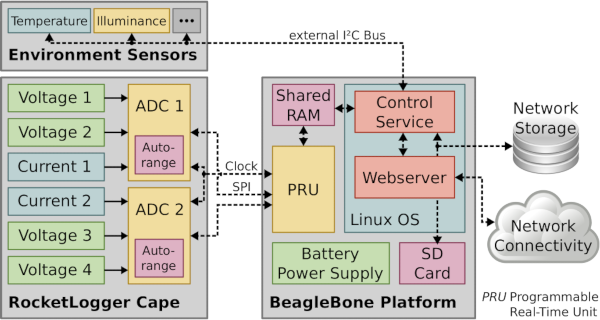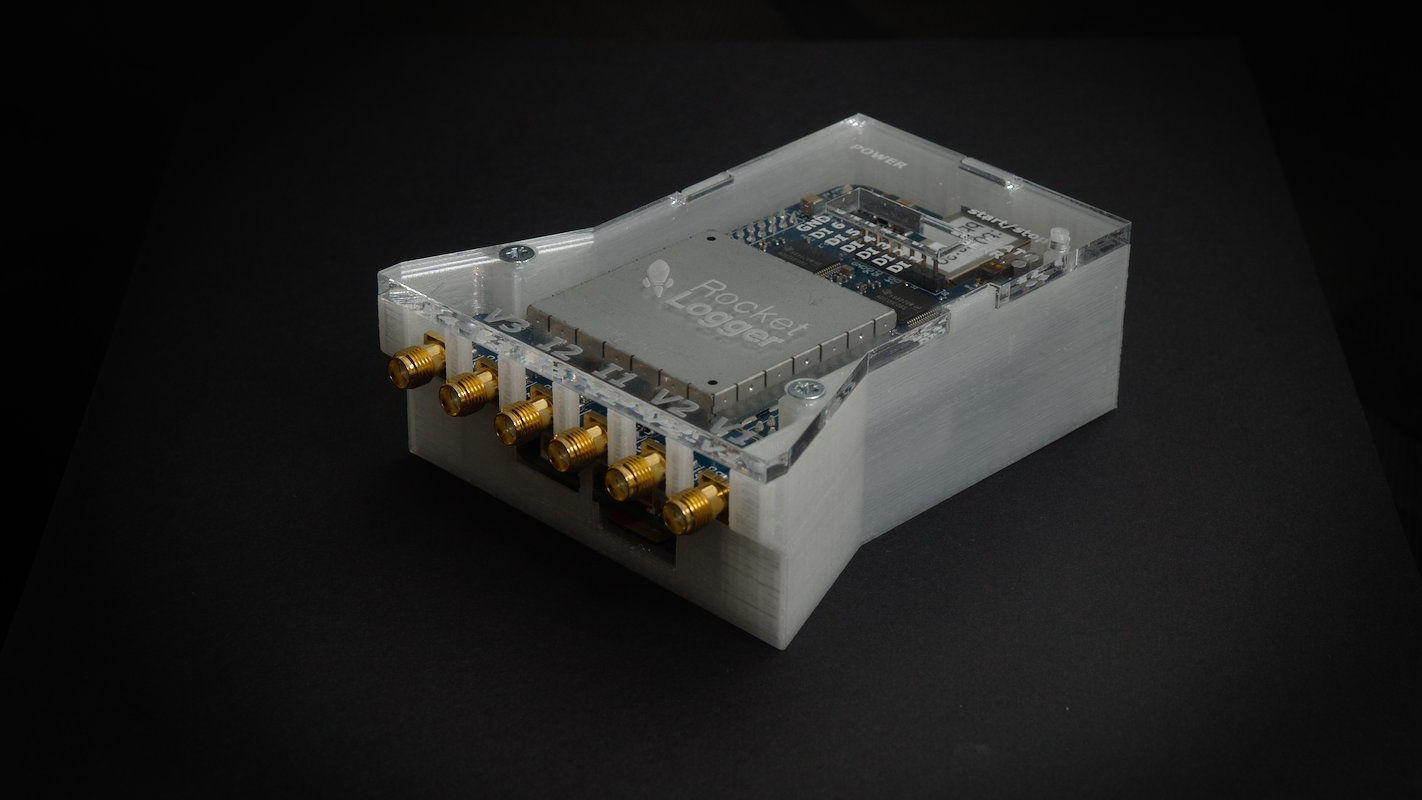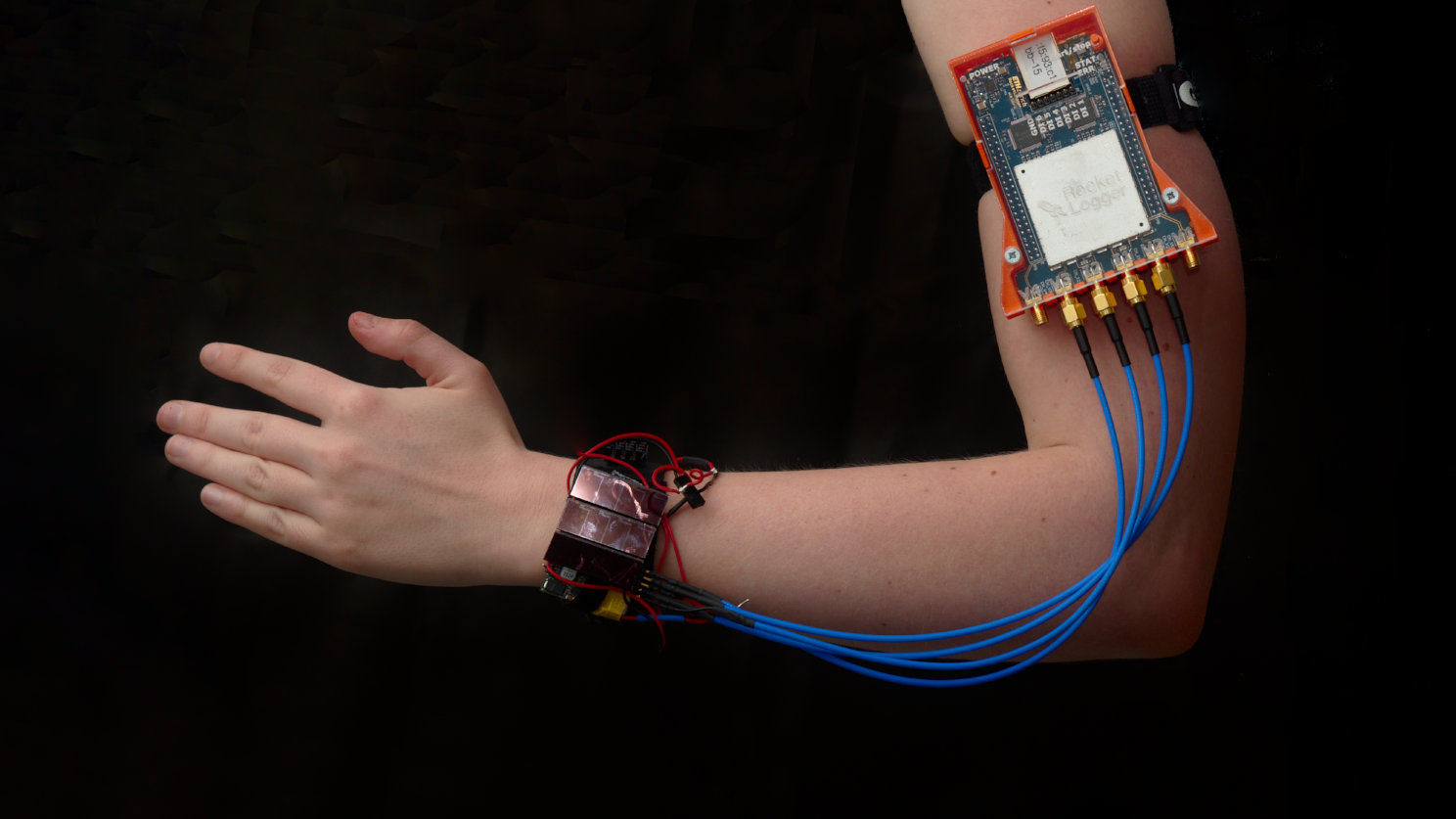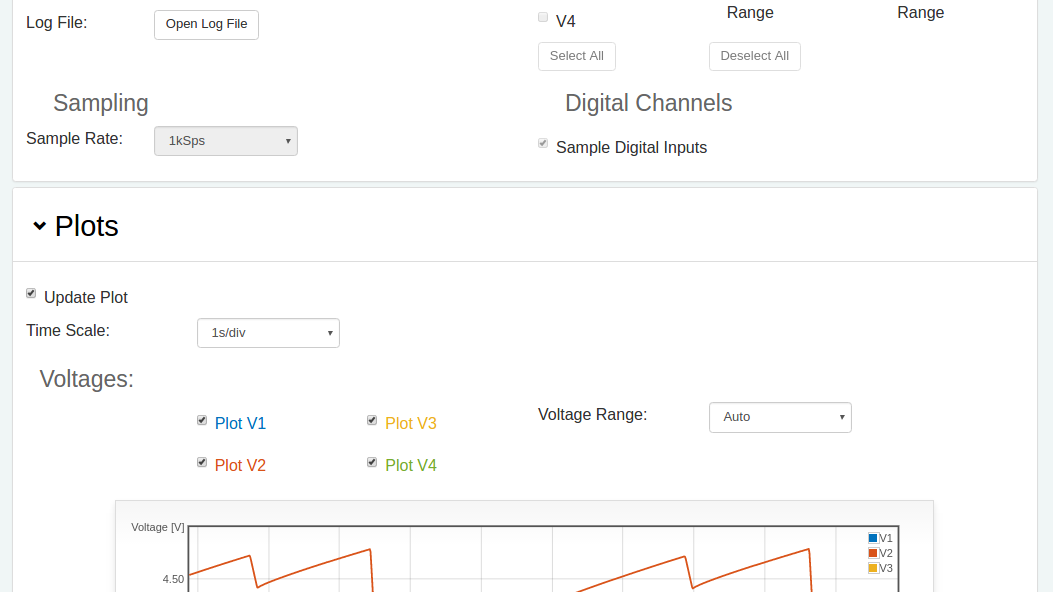The RocketLogger Project
Current research in embedded system design focuses on energy harvesting-based devices. Measuring and validating these devices requires equipment that can be both portable enough to be deployed in the field, and is accurate over a very wide voltage and current range. Since we couldn't find any commercial solution, we decided to build one ourselves - thus the RocketLogger was born.
Feature Overview
The RocketLogger is a novel data logger built to enhance the design process of ultra-low power and energy harvesting supplied systems. Its core features include:
- 2× Current Channels with high dynamic range from 4 nA (accuracy) up to ±500 mA
- 4× Voltage Channels measuring from 13 uV up to ±5.5 V
- Very fast and seamless current range switching for minimal impact on the device under test
- Simultaneously sampled digital inputs (x6) for tracking the system's state
- Portable design for mobile and in-situ measurements
- Environmental logging for characterizing harvesting conditions
- Convenient web interface for easy-to-use remote control and data management
This unique feature set makes the RocketLogger the perfect tool to facilitate the design and evaluation of energy harvesting driven systems.
Main Components
The RocketLogger platform consists of several components. The RocketLogger cape includes the analog frontend for high accuracy voltage and current measurements. The RocketLogger software stack includes all the data processing and visualization modules. A detachable sensor shield allows to record environmental conditions.

The RocketLogger Cape
This cape is the heart of the RocketLogger. The custom-designed cape contains our analog measurement frontend. It includes the four voltage and two current channels with seamless range-switching. It is this seamless range-switching that sets the RocketLogger apart from other mobile measurement devices, allowing it to accurately measure from sub-nanowatts up to a few watts.
The RocketLogger Software Stack
If the cape is the Rocketlogger's heart, the software stack is the Rocketlogger's brain. It is what handles the data acquisition from the cape, using the Beaglebone's Programmable Real-time Unit (PRU). Furthermore, its webserver enables remote management and displays all measurements in an easy-to-use graphical interface.
The RocketLogger Case
The 3-D printed case encloses the RocketLogger, protecting it from accidental contacts and short-circuits. It also helps the user identify each of the analog I-V channels and digital inputs.
RocketLogger Performance Characteristics
The RocketLogger's characteristics and measurement performance is summarized in the table below. For additional and more detailed characteristics we refer you to the RocketLogger Datasheet.
| Component | Metric | Range/Value |
|---|---|---|
| General | Sampling Rate | 1 kSPS up to 64 kSPS |
| Data Logged | up to 7.7 GB/h | |
| Logger Size | 68 mm × 100 mm | |
| Voltage ±5.5 V (×4) | Noise | 5.9 μV RMS (1.38 mV RMS) |
| Input Leakage | ∼ 5 pA | |
| Measurement Bandwidth | 262 Hz (10 kHz) | |
| DC Accuracy | 0.02 % + 13 μV | |
| Current ±500 mA (×2) | Total Dynamic Range | 175 dB |
| Burden Voltage at 500 mA | 47 mV | |
| Noise High Range | 1.33 μA RMS (72 μA RMS) | |
| Low Current Range | ±2 mA | |
| Noise Low Range | 1.75 nA RMS (390 nA RMS) | |
| Range Switching Time | 1.4 μs | |
| Transient Burden Voltage | max. 430 mV for ≤ 1.4 μs | |
| Measurement Bandwidth | 262 Hz (9.5 kHz) | |
| Accuracy Low Range | 0.03 % + 4 nA | |
| Accuracy High Range | 0.09 % + 3 μA | |
| Digital (×6) | Input Leakage | < 1 pA |
| Threshold Voltage (Configurable) | -6 V to +6 V |
It's all Open Source
All hardware and software components of the RocketLogger project are publicly available. They are released under 3-clause BSD license.
Getting Started with the RocketLogger
Do you want to use the RocketLogger for your own measurements? Setting it up and getting started with the first measurements is actually very simple:
- To get started, head over to the RocketLogger Software Stack wiki page and install the software using the ready made installation script.
- In a second step verify the hardware functionality by following the Hardware Initial Operation instructions.
- Connect the RocketLogger Cape to your BeagleBone, power up the system.
- You are now ready to make the first measurements and calibrate your RocketLogger.
RocketLogger as a Product
The RocketLogger is sold as a commercial product by MiroMico AG. You can find further details using the link below.
RocketLogger Related Publications
DATE 2017 paper introducing the RocketLogger measurement platform
Publication PDF: Measurement and Validation of Energy Harvesting IoT Devices
Conference Presentation: Slides
BibTeX:
@inproceedings{SGLLLT2017,
author = {Lukas Sigrist and Andres Gomez and Roman Lim and Stefan Lippuner and Matthias Leubin and Lothar Thiele},
title = {Measurement and Validation of Energy Harvesting IoT Devices},
address = {Lausanne, Switzerland},
booktitle = {Proceedings of the 2017 Design, Automation & Test in Europe Conference & Exhibition (DATE 2017)},
month = {Mar},
year = {2017}
}
SenSys 2016 demonstration of the RocketLogger prototype
Publication PDF: Demo Abstract: RocketLogger - Mobile Power Logger for Prototyping IoT Devices
BibTeX:
@inproceedings{SGLLLT2016,
author = {Lukas Sigrist and Andres Gomez and Roman Lim and Stefan Lippuner and Matthias Leubin and Lothar Thiele},
title = {RocketLogger - Mobile Power Logger for Prototyping IoT Devices},
address = {Stanford, CA, USA},
booktitle = {14th ACM Conference on Embedded Networked Sensor Systems (SenSys 2016)},
month = {Nov},
year = {2016}
}
The RocketLogger Development Team
- Andres Gomez
- Matthias Leubin
- Roman Lim
- Stefan Lippuner
- Lukas Sigrist
- Lothar Thiele
3D Case Design
- Dominic Bernath
RocketLogger Logo
- Ivanna Gomez
Project Maintainer and Contact
For project related questions, please contact Andreas Biri. If you have questions about how to use the logger, you might also find the answer in the RocketLogger Wiki.





